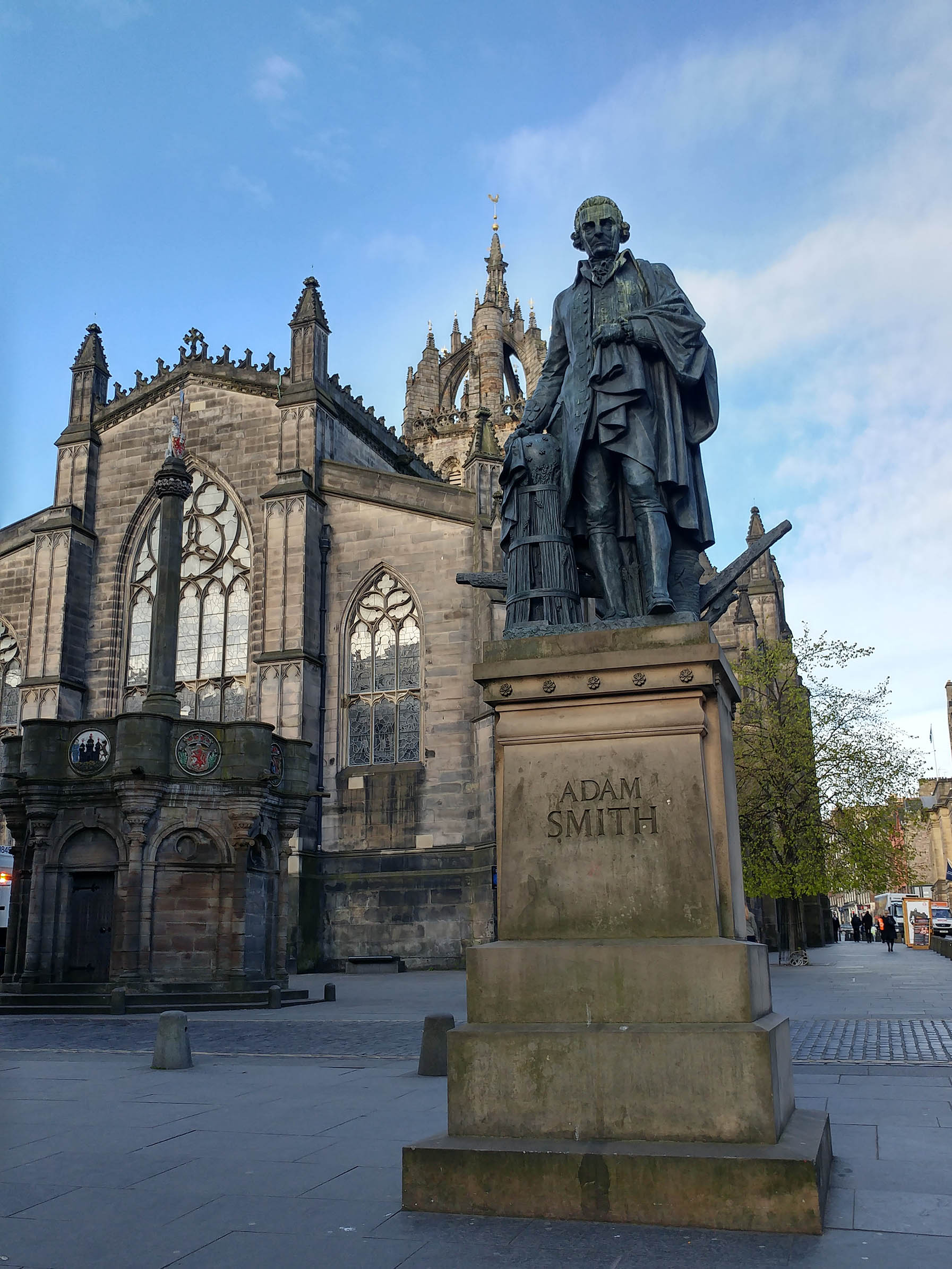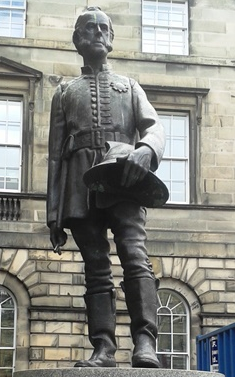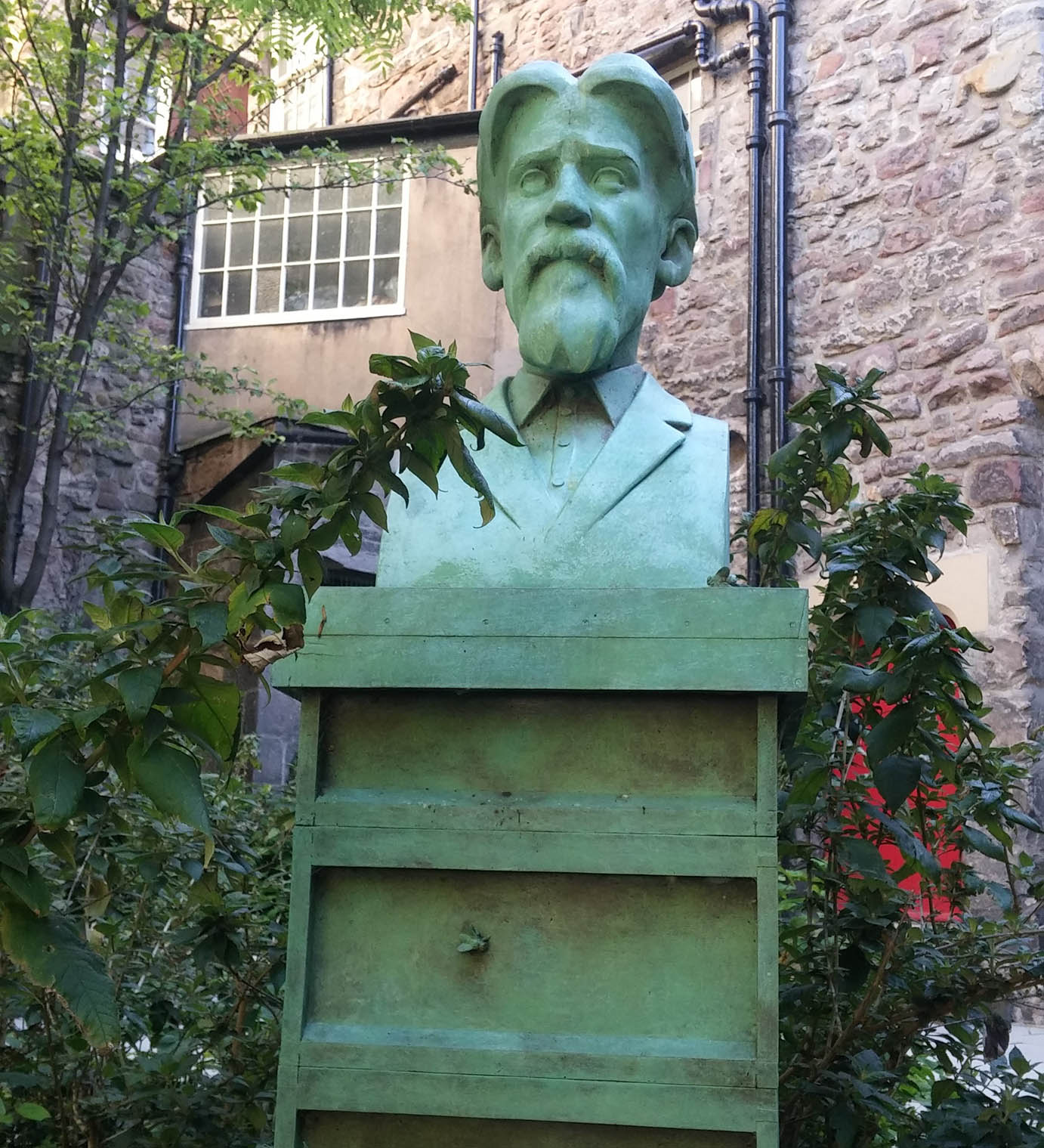Edinburgh's Alternative Fathers
10th Jun 2019Father’s Day is on the 16th June and to celebrate we decided to look at the alternative Dads that Edinburgh has to offer.
 Adam Smith
Adam Smith
You might notice a statue of Adam Smith just beside our meeting point, the Mercat Cross, where he stands and looks down the Royal Mile. Frequently nicknamed ‘the Father of Economics’ Smith was a hugely influential Scottish philosopher and economist, best known for his book ‘The Wealth of Nations’.
Smith studied at both Glasgow and Oxford University and after public lectures in Edinburgh which gave him his reputation he was appointed as Professor of Logic and later Moral Philosophy at Glasgow University. He soon became part of a circle including people such as David Hume and Lord Hailes. After working in Europe as tutor to the future Duke of Buccleuch he also met leading intellectuals such as Voltaire and Rousseau.
In 1776, Smith moved to London where he published ‘Inquiry into the Nature and Causes of the Wealth of Nations’ which was the first major work of political economy. In this work he stated that if people were free they would be able to better themselves which would produce economic prosperity for all. He also argued against the regulation of commerce and trade.
Later in 1778, he was appointed the commissioner of customs in Edinburgh and in 1783 became a founding member of the Royal Society of Edinburgh which is a charity providing public benefit throughout Scotland.
You can hear more about Adam Smith on our Secrets of the Royal Mile tour!
 James Braidwood
James Braidwood
Just behind the Mercat Cross you might have noticed a statue of a man – this is James Braidwood who is known as being the ‘Father of the British Fire Service’ due to his huge contribution.
Born in Edinburgh in 1800, he initially joined his fathers building company as an apprentice where he learned construction methods and the way fires spread in buildings.
In 1842, Braidwood worked with city authorities and the insurance companies to create the world’s first municipal fire service which would tackle fires whenever or wherever they occurred. He also established methods which are still in use today. The first station for this new outfit was located on the High Street, next to the entrance to Fishmarket Close.
Within weeks of the Brigade’s establishment in 1824, it was pressed into action to fight the Great Fire of Edinburgh. This ripped through the Old Town between the Tron Kirk and St Giles. The original clock tower of the Tron Kirk collapsed, destroying nearby buildings in the process. It was only with great effort and bravery on the part of Braidwood and his colleagues that the fire was prevented from reaching St Giles. How much worse could the destruction have been, if it hadn’t been for James Braidwood?
Braidwood’s work attracted attention, and in 1833 he was invited to establish a Fire Brigade for London. It was while fighting a fire in London in 1861, that he was trapped and killed by falling masonry.
Look out for him if you're booking a tour with us at the Mercat Cross!
 Patrick Geddes
Patrick Geddes
Last but not least we have the ‘Father of Modern Town Planning’, Patrick Geddes.
Born in 1854, Geddes was known for being a biologist, botanist and a pioneer in the field of town planning.
Born in Deeside but brought up in Perthshire he went on to study at Imperial College London before establishing the zoological facility in Stonehaven for Aberdeen University. He then went on to lecture zoology at the University of Edinburgh and became chair of Botany at University College, Dundee and Chair of Sociology at the University of Bombay.
Geddes made his name in the field of town planning at a time when deprivation and industrialisation were widespread. He believed that by changing a society’s surroundings and environment the behaviour and structure of that society could change and improve. He tested this in Edinburgh by redeveloping various areas of the Old Town. He even worked with the University of Edinburgh to create halls of residence and transform the image of the Old Town from 1700s slums into “modern” buildings. One of the most recognisable areas Geddes worked on was Ramsay Gardens, just off Castle Hill and the Edinburgh Castle Esplanade.
He also was a consultant on the redevelopment of Jerusalem and founded the Collège des Écossais (or Scots College) in Montpellier in France. In 1932 he was knighted but died only a short while later at the Collège des Écossais.
If you’re exploring the Royal Mile, you can actually find a bust of Geddes in Trunks Close, just behind the Scottish Storytelling Centre.
We can point him out if you join us for our Treasures of the Old Town tour - just ask!

